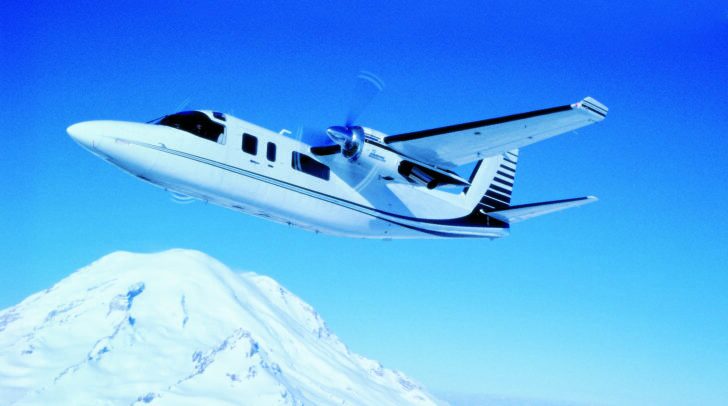By Robert Erlick

Winter is approaching, and with it conditions that call for special consideration and, in some cases, pilot techniques. Besides the formation of ice, which upsets the aerodynamic performance of the airplane and propeller as well as engine power, cold atmospheric conditions could also affect how well or how bad an engine will start.
Probably the most frustrating aspect of cold weather operation is getting an engine started. The following tips, which I adopted from an ancient Garrett Turbine Tips and Topics newsletter from 1974, will assist in getting your cold-soaked TPE331 engine started successfully and in a predictable manner.
Note: As always, procedures outlined in the specific aircraft flight manual (AFM) take precedence over the pilot tips outlined below.
Some Facts About Engine Oil
When oil gets cold, it gets thick. This problem is ameliorated by using synthetic turbine oil. Type II oils (MIL-L-23699) for an airplane would be akin to 20W-40W oil for a car engine and Type I (MIL-L-7808) is like 10W-30W automotive oil. Commonly, Type II is used when operating in moderate climates. Type I, on the other hand, is used for extremely cold environments because it is thinner than Type II and therefore reduces engine load during starting. When switching oils, remember these cautions:
- Don’t mix types or brands of oil;
- Follow the flushing procedures in the maintenance manual when changing oil types;
- Dumping fuel in the oil for cold-weather starting is never permitted for the TPE331.
Caution: Only those oil types and brands listed in the specific aircraft flight manual (AFM) may be used. Do not mix type and/or brand.
Oil pressure transient readings above normal limits are possible in cold-ambient temperatures. After starting the engine, you should limit re-setting engine RPM as much as possible and maintain minimum idle speeds until oil temperatures approach normal. When taxiing the aircraft with cold oil, keep control inputs smooth and slow and, when possible, keep RPM changes to a minimum. Propeller response in Beta mode may be sluggish. In any case, do not select high RPM or high power until the oil temperature is in the normal range.
Propeller governing RPM is affected by oil temperature. That means that with colder-than-typical oil temperature, governing RPM may be slightly higher than what is considered normal.
Batteries Need Attention, Too
As the oil gets thicker, it makes the engine harder to turn. Therefore, more energy is needed to start the engine. Unfortunately, the colder a battery gets the less energy it can deliver for starting. For that reason, whenever the temperature is below 54° F (12° C), use external power (if available) for starting.
If external power is not available and a battery start must be made with cold-soaked engines, it is recommended to keep the battery warm. If possible, have it stored in a warm place or use a battery warmer.
Note: removing and re-installing batteries may constitute a maintenance action and could, therefore, require an entry in a logbook and a signoff by a certified and/or licensed mechanic.
External Heat Helps
If no external power is available, a ground heater unit makes an ideal cold-weather companion. Split its output between the engine oil tank and the battery compartment.
Pre-flight Ideas
During the walk-around, some of the engine’s stiffness can be reduced by pulling the propellers through by hand. I suggest 10 to 20 blades could reduce some of the drag imposed by the congealed oil.
Caution: Make certain that the engine inlet is free from snow and ice and do not force the rotation by hand.
The above tips are intended to be supplemental to the FAA-approved limitations and operating procedures published in the appropriate AFM. For additional information on cold weather operations or any other TPE331 engine operational issues, please contact me at the Honeywell Flight Technical Services Group, Tel USA (480) 399-4007, or Robert.Erlick@Honeywell.com
